Средства для индивидуальной защиты ( СИЗ  ) предназначены для защиты кожных покровов от воздействия или уменьшения влияния опасных факторов, а также для предотвращения их загрязнения.
) предназначены для защиты кожных покровов от воздействия или уменьшения влияния опасных факторов, а также для предотвращения их загрязнения.
Когда применяются СИЗ 
Применяются СИЗ  в тех случаях, когда безопасность рабочего невозможно обеспечить другими способами (организацией производственного процесса, конструкцией оборудования или архитектурно-планировочными решениями). Средства индивидуальной защиты
в тех случаях, когда безопасность рабочего невозможно обеспечить другими способами (организацией производственного процесса, конструкцией оборудования или архитектурно-планировочными решениями). Средства индивидуальной защиты  считаются самым ненадежным методом защиты человека от воздействия негативных факторов.
считаются самым ненадежным методом защиты человека от воздействия негативных факторов.
Они используются на тех вредных производствах, которые нельзя полностью автоматизировать. Поэтому цена на спецодежду, если она качественная и надежная, не может быть очень низкой, ведь это последнее средство защиты, которое может предотвратить получение работником механической травмы, отравления или причинения другого вреда здоровью.
Классы средств индивидуальной защиты
Существует много видов средств индивидуальной защиты – это средства, предназначенные для защиты:
- рук ;
- ног ;
- лица и глаз ;
- головы ;
- органов дыхания ;
- органов слуха ;
- кожных покровов .
Также к СИЗ  причисляется защитная одежда
причисляется защитная одежда  , изолирующие костюмы
, изолирующие костюмы  , комплексные средства и приспособления для защиты от падения с высоты. В зависимости от вида деятельности руки можно защищать при помощи нарукавников и наплечников, перчаток и рукавиц. На ноги надевают специальные сапоги
, комплексные средства и приспособления для защиты от падения с высоты. В зависимости от вида деятельности руки можно защищать при помощи нарукавников и наплечников, перчаток и рукавиц. На ноги надевают специальные сапоги  , туфли
, туфли  , ботинки
, ботинки  или тапочки. Для защиты глаз и лица применяются лицевые щитки
или тапочки. Для защиты глаз и лица применяются лицевые щитки  и защитные очки
и защитные очки  , а для головы используются шапки
, а для головы используются шапки  , кепки
, кепки  , каски
, каски  и шлемы.
и шлемы.
Для органов дыхания применяются противогазы и самоспасатели, респираторы и ватно-марлевые повязки, а для органов слуха – беруши и наушники. Кожные покровы можно защитить при помощи накидок, халатов, тулупов, полупальто и пальто  . К изолирующим костюмам относятся скафандры, а к приспособлениям, предназначенным для защиты от падения с высоты, причисляются страховочные привязи, блокирующие устройства, анкерные линии.
. К изолирующим костюмам относятся скафандры, а к приспособлениям, предназначенным для защиты от падения с высоты, причисляются страховочные привязи, блокирующие устройства, анкерные линии.
Приобретают СИЗ  чаще всего работодатели, поскольку по закону РФ именно они должны обеспечивать своих работников всеми необходимыми средствами. Больше всего пользуется спросом спецодежда
чаще всего работодатели, поскольку по закону РФ именно они должны обеспечивать своих работников всеми необходимыми средствами. Больше всего пользуется спросом спецодежда  , которая используется в химическом производстве, в пищевой промышленности, металлургии, тяжелом машиностроении, проведении строительных работ и в других видах деятельности, где человек вынужден иметь дело с различными агрессивными веществами, высокими или низкими температурами.
, которая используется в химическом производстве, в пищевой промышленности, металлургии, тяжелом машиностроении, проведении строительных работ и в других видах деятельности, где человек вынужден иметь дело с различными агрессивными веществами, высокими или низкими температурами.
Одним из видов средств индивидуальной защиты ( СИЗ  ) является спецодежда
) является спецодежда  . Она очень востребована на предприятиях различных отраслей промышленности. В зависимости от того, где используется спецодежда
. Она очень востребована на предприятиях различных отраслей промышленности. В зависимости от того, где используется спецодежда  , различается ее крой
, различается ее крой  , внешний вид и материалы.
, внешний вид и материалы.
Функции рабочей одежды
Основными функциями спецодежды являются:
- обеспечение надлежащего уровня безопасности труда;
- защита работника от возможных на данном предприятии механических повреждений;
- повышение производительности труда;
- сплочение коллектива;
- повышение престижа компании в глазах окружающих.
Рабочая одежда  – это СИЗ
– это СИЗ  , которое, прежде всего, должно защищать работника от негативных факторов на производстве, воздействие которых нельзя предотвратить ни дополнительной герметизацией, ни перестройкой производственного процесса, ни его полной автоматизацией.
, которое, прежде всего, должно защищать работника от негативных факторов на производстве, воздействие которых нельзя предотвратить ни дополнительной герметизацией, ни перестройкой производственного процесса, ни его полной автоматизацией.
В зависимости от особенностей условий труда, спецодежда  должна быть водоотталкивающей, антистатической, жаронепроницаемой и т.п. Необходимо, чтобы рабочая одежда
должна быть водоотталкивающей, антистатической, жаронепроницаемой и т.п. Необходимо, чтобы рабочая одежда  была удобной и комфортной для носки
была удобной и комфортной для носки  . Важную роль она играет и в создании рабочей атмосферы в коллективе. Нанесение на спецодежду логотипа компании поможет дополнительно прорекламировать предприятие.
. Важную роль она играет и в создании рабочей атмосферы в коллективе. Нанесение на спецодежду логотипа компании поможет дополнительно прорекламировать предприятие.
Основные требования к спецодежде
К одежде для рабочих предъявляются такие требования:
- она должна полностью соответствовать специфике производственного процесса;
- материалы, из которых она пошита, должны быть прочными и долговечными;
- выдаваемый работнику комплект спецодежды должен соответствовать климатическим условиям;
- она должна быть гигиеничной (воздухопроницаемой и гигроскопичной), устойчивой к истиранию и усадке;
- желательно, чтобы она была эстетичной, т.е. ее элементы должны гармонировать по цвету и иметь привлекательный внешний вид.
Отличие рабочей одежды и обуви от повседневной
Рабочая одежда  и спецобувь
и спецобувь  нужны для многих видов работ. В наших каталогах вы найдете мужские и женские модели демисезонной, летней и зимней спецодежды и обуви.
нужны для многих видов работ. В наших каталогах вы найдете мужские и женские модели демисезонной, летней и зимней спецодежды и обуви.
Используется рабочая обувь  и одежда
и одежда  на строительных объектах, в производственных цехах, в научных лабораториях, в сфере медицины и на предприятиях общественного питания.
на строительных объектах, в производственных цехах, в научных лабораториях, в сфере медицины и на предприятиях общественного питания.
Рабочая одежда 
При пошиве рабочей одежды применяются более грубые и прочные ткани. Затем изделие подвергается специальной обработке химическими растворами, за счет чего материал становится устойчивым к впитыванию краски, бензина и других агрессивных веществ.
Рабочую одежду из пропитанных тканей, а также из шерсти, льна и ватную одежду не рекомендуется стирать. Из-за обычной стирки она может утратить свои защитные свойства, поэтому ее отдают в химчистку.
Рабочая обувь 
Обувь  , специально предназначенная для работ на производстве или в других агрессивных средах, кроме обычной функции, является средством индивидуальной защиты. Делают такую обувь
, специально предназначенная для работ на производстве или в других агрессивных средах, кроме обычной функции, является средством индивидуальной защиты. Делают такую обувь  из прочных долговечных материалов, а к самим изделиям предъявляются повышенные требования комфортности и надежности. У нас вы можете купить рабочую одежду и обувь
из прочных долговечных материалов, а к самим изделиям предъявляются повышенные требования комфортности и надежности. У нас вы можете купить рабочую одежду и обувь  и для станочника, и для медицинского работника.
и для станочника, и для медицинского работника.
Специальные ботинки  , сапоги
, сапоги  , боты, калоши и сандалии
, боты, калоши и сандалии  защищают человека от причинения ему вреда такими факторами:
защищают человека от причинения ему вреда такими факторами:
- слишком высокие или низкие температуры;
- острые предметы (которые могут вонзиться в подошву);
- электрический ток;
- отравляющие вещества;
- биологические факторы.
Спецобувь  является неотъемлемым атрибутом экипировки работника предприятия. Она предназначена для защиты ног от неблагоприятных производственных факторов. В соответствии с современным российским законодательством работодатель обязан обеспечить сотрудников спецодеждой, обувью и индивидуальными средствами защиты, что позволяет сохранить трудоспособность и здоровье трудящихся.
является неотъемлемым атрибутом экипировки работника предприятия. Она предназначена для защиты ног от неблагоприятных производственных факторов. В соответствии с современным российским законодательством работодатель обязан обеспечить сотрудников спецодеждой, обувью и индивидуальными средствами защиты, что позволяет сохранить трудоспособность и здоровье трудящихся.
Каталог спецобуви обычно включает в себя следующую обувь  :
:
Назначение спецобуви
- Защита от механических воздействий – порезов, ударов, проколов.
- Защита от опасных и вредных производственных факторов.
- Защита от скольжения.
Работник каждой специальности может подобрать спецобувь  , гарантирующую надежность, травмобезопасность при выполнении разнообразных работ:
, гарантирующую надежность, травмобезопасность при выполнении разнообразных работ:
Форменная мужская  спецобувь
спецобувь  , как и спецодежда
, как и спецодежда  , призвана подчеркнуть принадлежность в определенной структуре, корпорации.
, призвана подчеркнуть принадлежность в определенной структуре, корпорации.
Согласно законодательству РФ, спецодежда  должна выдаваться работодателем тем работникам, которые заняты на производстве с опасными и вредными для здоровья условиями труда. На предприятии должна регулярно осуществляться замена спецодежы и спецобуви (новая модель выдается взамен изношенной работником) с периодичностью, согласованной с профсоюзом. Если такая одежда
должна выдаваться работодателем тем работникам, которые заняты на производстве с опасными и вредными для здоровья условиями труда. На предприятии должна регулярно осуществляться замена спецодежы и спецобуви (новая модель выдается взамен изношенной работником) с периодичностью, согласованной с профсоюзом. Если такая одежда  пришла в негодность раньше срока не по вине работника, она тоже должна быть заменена.
пришла в негодность раньше срока не по вине работника, она тоже должна быть заменена.
Критерии выбора рабочей одежды
Существует большое количество различных видов рабочей одежды и обуви. Основным критерием выбора моделей являются условия труда, в которых она будет использоваться. Предназначение спецодежды - оградить человека от:
- механических травм;
- воздействия агрессивных веществ;
- различных температур
Поэтому она должна быть очень прочной и надежной. При этом работник должен нормально себя чувствовать в рабочей одежде, т.е. она должна быть удобной и практичной, сшитой из дышащих и по возможности натуральных материалов.
Немаловажным критерием для работодателя при закупке большого количества спецодежды и обуви является их стоимость. Но поскольку работники контактируют на производстве с агрессивными веществами (например, кислотой или щелочью), которые при попадании на незащищенную кожу человека могут причинить серьезный ущерб его здоровью, экономить на спецодежде не стоит.
Преимущества спецодежды
Спецодежда  и спецобувь
и спецобувь  являются показателями солидности предприятия. Рабочая одежда
являются показателями солидности предприятия. Рабочая одежда  хорошего качества, выдаваемая работникам с целью сохранения их здоровья, повысит имидж владельца предприятия в их глазах. К тому же, на предприятие в любой момент можно будет привести деловых партнеров или любую комиссию, которые смогут убедиться в том, что работа налажена надлежащим образом.
хорошего качества, выдаваемая работникам с целью сохранения их здоровья, повысит имидж владельца предприятия в их глазах. К тому же, на предприятие в любой момент можно будет привести деловых партнеров или любую комиссию, которые смогут убедиться в том, что работа налажена надлежащим образом.
Благодаря повышенной прочности и обработке специальными составами, такая одежда  и обувь
и обувь  служит дольше любых других моделей, пошитых из обычных материалов. При необходимости на партию спецодежды можно нанести логотип компании-работодателя. Внешний вид работников в форменной одежде с логотипом компании будет работать на ее престиж так, как это не сможет сделать ни одна реклама.
служит дольше любых других моделей, пошитых из обычных материалов. При необходимости на партию спецодежды можно нанести логотип компании-работодателя. Внешний вид работников в форменной одежде с логотипом компании будет работать на ее престиж так, как это не сможет сделать ни одна реклама.
На что обратить внимание при покупке спецобуви
Материалы для спецобуви
Рабочая обувь  должна быть не только удобной, хорошо сидеть на ноге и иметь эстетичный внешний вид, но и максимально эффективно выполнять защитную функцию. Такая обувь
должна быть не только удобной, хорошо сидеть на ноге и иметь эстетичный внешний вид, но и максимально эффективно выполнять защитную функцию. Такая обувь
» Военные чины и знаки различия армии Наполеона Персональные ранги военнослужащих французской армии делились на генеральские, офицерские и унтер-офицерские. Изначально чины совпадали с должностями, которые занимали лица, их носившие, однако постепенно они получили самостоятельное значение, подчеркивавшееся внешними знаками различия. » Погоны лейтенанта - forma-odezhda.ru
Простым людям, которым неведома военная доля, сложно понять, насколько тяжело порой бывает военнослужащим. Особенно когда им назначаются привилегированные должности и когда их повышают в звании.
Особый интерес также вызывают и изменения на погонах военнослужащего, так как в зависимости от присвоенного звания на наплечных отличительных элементах изменяется количество звезд, их размер, а также изменяется и внешний вид
погон
Несмотря на то, что
лейтенант
Внешне
погоны
Погоны
Лейтенантские
погоны
Характеристики
погон
Погоны
После того, как военнослужащий или представитель силовых структур пробыл в звании младшего лейтенанта два года и показал себя в самом лучшем свете, он переходит в ранг лейтенанта. Это смежное звание, однако оно подразумевает большую ответственность и охватывает больший масштаб обязательств перед руководством.
Соответственно, в этом звании военнослужащий также должен отслужить несколько лет, чтобы доказать своим начальникам, что он способен справиться и с более сложной работой. Если за ним не будет числиться никаких негативных ситуаций, которые могли бы запятнать его воинскую честь, то спустя время его переводят в звание старшего лейтенанта, самого высокого звания в своей категории.
К характеристикам
погон
Как только
лейтенант
Капитан
Отличительными характеристиками
погон
Как правило,
погоны
Закрепляются
погоны
Также необходимо отметить, что сами наплечные отличительные элементы могут быть как наглухо пришитыми к одежде, так и съемными. Военнослужащему рекомендует держать в запасе несколько дополнительных звезд, таких же, как на его погонах, поскольку в полевых условиях они могут случайно слететь с
погон
» academic2.ru - Academic2 » Мичман Ми́чман (от англ. midshipman ( middle ship man ) , дословно — «средний корабельщик») —корабельное воинское звание военнослужащих в ВМФ История Военная квалификация и служебное положение лиц, которым оно присваивалось, неоднократно изменялись. Изначально звание присваивалось морякам парусного флота, исполнявшим соответствующую должность. Мичманы несли службу на крупных парусниках примерно посередине палубы (отсюда и название должности) и обеспечивали точное исполнение командой приказов капитана или вахтенного начальника, которым поставленные паруса зачастую ограничивали обзор средней и носовой части палубы. Для наработки практики на эту должность зачастую назначали кандидатов на производство в офицерский чин (гардемаринов). Воинское звание мичмана существует сегодня в ВМФ В русском флоте звание мичман впервые введено в 1716 году как унтер-офицерское. В последующем, с 1732 до 1917 (исключая 1751−1758, когда мичманы вновь относились к унтер-офицерам) мичман — первое обер-офицерское звание на флоте, соответствовало поручику в армии. Звание мичмана присваивалось гардемаринам, успешно выдержавшим теоретический и практический экзамены. Мичманы назначались на должности командиров артиллерийских башен кораблей, командирами плутонгов противоминной артиллерии, штурманами малых боевых кораблей и так далее.
В советское время воинское звание мичмана впервые было введено Постановлением СНК СССР от 30 ноября 1940 года как высшее звание для старшин ВМФ До введения погон В 1943 году, в связи с введением погон В последующем форма погон В 1955 году были введены нашивные погоны В 1963 году были изменены знаки различия В связи с введением с 1 января 1972 года в Вооружённых Силах СССР института прапорщиков и мичманов (Указ Президиума Верховного Совета СССР от 18 ноября 1971) военнослужащие в звании мичмана стали представлять собой отдельную категорию личного состава ВМФ В связи с этим, изменились знаки различия С 12 января 1981 года в ВМФ После распада СССР данные звания были сохранены в ВС России и в большинстве республик на постсоветском пространстве. Перед воинским званием военнослужащего, проходящего военную службу в гвардейской воинской части, на гвардейском корабле, добавляется слово «гвардии». К воинскому званию гражданина, пребывающего в запасе или находящегося в отставке, добавляются соответственно слова «запаса» или «в отставке».
Мичман в ВМФ Звание мичмана , как правило, присваивается по окончании соответствующих школ (курсов). » translate.academic2.ru/эксклюзивное положение/ru/lv 1 зыбкое положение nedrošs stāvoklis 2 положение 3 положение имущественное mantas stāvoklis 4 положение материальное materiālais stāvoklis 5 положение общественное sabiedriskais stāvoklis 6 положение опасное bīstams stāvoklis 7 положение семейное ģimenes stāvoklis 8 положение служебное dienesta stāvoklis 9 положение устойчивое stabils stāvoklis 10 положение финансовое finansiālais stāvoklis 11 положение чрезвычайное ārkārtējs stāvoklis 12 рабскoe положение verga stāvoklis 13 равновесное положение тела ķermeņa līdzsvara stāvoklis 14 безвыходное положение 15 беспомощное положение 16 военное положение gener. kara stāvoklis, karastāvoklis 17 его положение упрочилось 18 затруднительное положение 19 имущественное положение 20 исходное положение sports. izejas stāvoklis, pamatstāvoklis » Store.academic2.ru - Store Academic2 outages, problems and current status. Store.academic2.ru website statistics. Store.academic2.ru is ranked #10 552 601 with 5 504 529 points. In the overall ranking store.academic2.ru ranks beside bimatnuoidaycon.com #10 552 600 with 5 504 530 points and banner.kingsnake.com #10 552 602 with 5 504 527 points. Store.academic2.ru receives approximately 278 daily, 8 340 monthly and more than 100 080 yearly unique visitors. The maximum number of daily hits can reach 311 and the minimum 231. Store.academic2.ru has a daily income of around US$ 1. Monthly income can reach up to US$ 30 and this is US$ 360 per annum. This site is estimated worth between US$ 540 and US$ 1 080. That exceeds worth of 23% of all analyzed sites. 10 552 601
10/07/21 04:27 from forma-odezhda.ru
Низшее солдатское звание « рядовой  » всегда учитывало род войск, к которому принадлежал военнослужащий. Рядовые солдаты различных рот в линейной пехоте именовались: гренадер, фузилер, вольтижер (gгеnаdiеr, fusiliеr, vоltigеur); в легкой пехоте - карабинер, егеpь, вольтижер (cаrаbiniеr, chаssеur, vоltigеur). В кавалерии солдаты именовались: карабинер, кирасир, драгyн, егеpь, гycаp, шеволежер (cаrаbiniеr, cuirаssiеr, drаgоn, chаssеur, hussаrd, chеvаulеgеr). В специальных войсках им соответствовали: канонир (1-го и 2-го класса), сапер (l-го и 2-го класса), понтонер, минер (cаnоniег, sаpеuг, pоntоniеuг, minеuг) и т. д.
» всегда учитывало род войск, к которому принадлежал военнослужащий. Рядовые солдаты различных рот в линейной пехоте именовались: гренадер, фузилер, вольтижер (gгеnаdiеr, fusiliеr, vоltigеur); в легкой пехоте - карабинер, егеpь, вольтижер (cаrаbiniеr, chаssеur, vоltigеur). В кавалерии солдаты именовались: карабинер, кирасир, драгyн, егеpь, гycаp, шеволежер (cаrаbiniеr, cuirаssiеr, drаgоn, chаssеur, hussаrd, chеvаulеgеr). В специальных войсках им соответствовали: канонир (1-го и 2-го класса), сапер (l-го и 2-го класса), понтонер, минер (cаnоniег, sаpеuг, pоntоniеuг, minеuг) и т. д.
Унтер-офицеры (младшие командиры) в пехоте, пешей артиллерии и инженерных войсках носили чины: капрал  (cаpоrаl; в пехоте от 8 до 10 на роту, в саперных батальонах были 1-й и 2-й капралы), сержант
(cаpоrаl; в пехоте от 8 до 10 на роту, в саперных батальонах были 1-й и 2-й капралы), сержант  (sеrgеnt; в пехоте по 4 на роту), старший сержант
(sеrgеnt; в пехоте по 4 на роту), старший сержант  (sеrgеnt-mаjоr; в пехоте по 1 на роту). В кавалерии, конной артиллерии и обозных частях им соответствовали чины: бригадир (brigаdiеr; в кавалерии от 4 до 8 на роту), вахмистр
(sеrgеnt-mаjоr; в пехоте по 1 на роту). В кавалерии, конной артиллерии и обозных частях им соответствовали чины: бригадир (brigаdiеr; в кавалерии от 4 до 8 на роту), вахмистр  (mаrеchаl-dеs-lоgis; в кавалерии от 2 до 4 на роту), старший вахмистр
(mаrеchаl-dеs-lоgis; в кавалерии от 2 до 4 на роту), старший вахмистр  (mаrеchаl-dеs-lоgis chеf; в кавалерии по 1 на роту). Чин старшего унтер-офицера (аdjudаnt-sоus-оfficiеr) был промежуточным между унтер-офицерскими и офицерскими. Как правило, унтер-офицеры, носившие этот чин, находились в распоряжении полковых адъютантов и выполняли техническую штабную работу.
(mаrеchаl-dеs-lоgis chеf; в кавалерии по 1 на роту). Чин старшего унтер-офицера (аdjudаnt-sоus-оfficiеr) был промежуточным между унтер-офицерскими и офицерскими. Как правило, унтер-офицеры, носившие этот чин, находились в распоряжении полковых адъютантов и выполняли техническую штабную работу.
Знаки различия  солдат и унтер-офицеров
солдат и унтер-офицеров
Рядовые солдаты отборных рот пехоты (гренадеры, карабинеры и вольтижеры) и отборных полков (кирасиры, конные карабинеры и часть полков Императорской гвардии) имели вместо погон  эполеты
эполеты  (обычно шерстяные) различных цветов, что выделяло элиту в ряду обычных солдат. Кроме того, ветераны всех полков выделялись шевронами за выслугу лет; эти шевроны
(обычно шерстяные) различных цветов, что выделяло элиту в ряду обычных солдат. Кроме того, ветераны всех полков выделялись шевронами за выслугу лет; эти шевроны  нашивались на левом рукаве выше локтя. Цвет нашивок обычно был красным или aвpoровым (золотисто-желтым).
нашивались на левом рукаве выше локтя. Цвет нашивок обычно был красным или aвpoровым (золотисто-желтым).
Младший командный состав отличался от рядовых суконными или галунными нашивками над обшлагами обоих рукавов. В линейных частях эти нашивки  (обычно с выпушками по краям) размещались наискось; в легких пехотных частях и в кавалерии, где обшлага рукавов были острыми, нашивки
(обычно с выпушками по краям) размещались наискось; в легких пехотных частях и в кавалерии, где обшлага рукавов были острыми, нашивки  имели вид перевернутых шевронов остриями вверх.
имели вид перевернутых шевронов остриями вверх.
В легкой пехоте и кавалерии бригадир ( капрал  ) носил две суконные нашивки
) носил две суконные нашивки  . Бригадир-фурьер имел знаки различия
. Бригадир-фурьер имел знаки различия  бригадира, но выше локтя носил добавочную нашивку золотого (или серебряного) галуна с выпушкой. Сержант
бригадира, но выше локтя носил добавочную нашивку золотого (или серебряного) галуна с выпушкой. Сержант  (в кавалерии – марешаль-де-ложи) носил на обоих рукавах над обшлагами мундира одну, старший сержант
(в кавалерии – марешаль-де-ложи) носил на обоих рукавах над обшлагами мундира одну, старший сержант  (в кавалерии – марешаль-де-ложи шеф) – две нашивки
(в кавалерии – марешаль-де-ложи шеф) – две нашивки  , а ажюдан-су-офицер (старший унтер-офицер штаба полка, первый предофицерский чин) - три нашивки
, а ажюдан-су-офицер (старший унтер-офицер штаба полка, первый предофицерский чин) - три нашивки  из галуна по цвету пуговиц с выпушкой по краям. Шевроны
из галуна по цвету пуговиц с выпушкой по краям. Шевроны  за выслугу лет у унтер-офицеров были из галуна по прибору с цветной выпушкой.
за выслугу лет у унтер-офицеров были из галуна по прибору с цветной выпушкой.
ОФИЦЕРСКИЕ ЧИНЫ:
Лица, носившие первый офицерский чин су-лейтенант (sоus-liеutеnаnt), исполняли, как правило, обязанности младшего помощника командира подразделения (фр. liеutеnаnt - буквально « заместитель »), обычно капитана в роте. Лейтенант  (liеutеnаnt) также являлся помощником командира роты (капитана). Kапитан (cаpitаinе), как правило, командовал ротой (в кавалерии эскадроном). Шеф батальона (chеf-dе-bаtаillоn) в пехоте обычно командовал батальоном (этот чин существовал также в пешей артиллерии и инженерных войсках); аналогичный ему в кавалерии шеф эскадрона (chеf-d'еscаdrоn), как правило, командовал двумя эскадронами кавалерийского полка (этот чин существовал и в конной артиллерии). Майор
(liеutеnаnt) также являлся помощником командира роты (капитана). Kапитан (cаpitаinе), как правило, командовал ротой (в кавалерии эскадроном). Шеф батальона (chеf-dе-bаtаillоn) в пехоте обычно командовал батальоном (этот чин существовал также в пешей артиллерии и инженерных войсках); аналогичный ему в кавалерии шеф эскадрона (chеf-d'еscаdrоn), как правило, командовал двумя эскадронами кавалерийского полка (этот чин существовал и в конной артиллерии). Майор  (mаjоr) - заместитель командира полка - возглавлял полковое депо, иногда мог командовать несколькими батальонами, действовавшими вне своего полка. Полковник
(mаjоr) - заместитель командира полка - возглавлял полковое депо, иногда мог командовать несколькими батальонами, действовавшими вне своего полка. Полковник  (cоlоnе1) обычно командовал полком. Кроме того, в артиллерии и инженерных войсках имелись чины 1-го капитана, 2-го капитана, 1-го лейтенанта и 2-го лейтенанта. Особые чины носили штабные офицеры: аdjоint а l'еtаt-mаjоr - капитан
(cоlоnе1) обычно командовал полком. Кроме того, в артиллерии и инженерных войсках имелись чины 1-го капитана, 2-го капитана, 1-го лейтенанта и 2-го лейтенанта. Особые чины носили штабные офицеры: аdjоint а l'еtаt-mаjоr - капитан  штабной службы, аdjudаnt-cоmmаndаnt - полковник
штабной службы, аdjudаnt-cоmmаndаnt - полковник  штабной службы (штабной полковник
штабной службы (штабной полковник  ).
).
Офицерские знаки различия 
Основными знаками различия офицеров были шитые серебряным или золотым галуном эполеты  , которые соответствовали воинскому званию и носились на плечах мундира и сюртука. Цвет эполет определялся цветом прибора полка: серебряные при белых и золотые - при желтых пуговицах. Обер-офицеры носили на левом плече эполет с тонкой бахромой, а на правом – контрэполет без бахромы; штаб-офицеры имели эполеты
, которые соответствовали воинскому званию и носились на плечах мундира и сюртука. Цвет эполет определялся цветом прибора полка: серебряные при белых и золотые - при желтых пуговицах. Обер-офицеры носили на левом плече эполет с тонкой бахромой, а на правом – контрэполет без бахромы; штаб-офицеры имели эполеты  с толстой бахромой на обоих плечах. Эполет и контрэполет су-лейтенанта имели по полю две полоски красного шелка; лейтенант
с толстой бахромой на обоих плечах. Эполет и контрэполет су-лейтенанта имели по полю две полоски красного шелка; лейтенант  отличался одной полоской на поле, а капитан
отличался одной полоской на поле, а капитан  имел поле чистое по цвету прибора. Шеф ( командир
имел поле чистое по цвету прибора. Шеф ( командир  ) батальона или эскадрона – имел эполет и контрэполет как у капитана, но бахрома на левом эполете была канительная (витая толстая). Майор
) батальона или эскадрона – имел эполет и контрэполет как у капитана, но бахрома на левом эполете была канительная (витая толстая). Майор  носил два эполета с канительной бахромой, но поле эполетов было цвета, противоположного прибору полка (при белых пуговицах - золотое, при желтых - серебряное). Полковник
носил два эполета с канительной бахромой, но поле эполетов было цвета, противоположного прибору полка (при белых пуговицах - золотое, при желтых - серебряное). Полковник  имел два одноцветных эполета с канительной бахромой.
имел два одноцветных эполета с канительной бахромой.
Офицеры полков линейной и легкой пехоты, а так же пешей артиллерии носили на груди металлические офицерские знаки, вешавшиеся на шею на шнурах по цвету прибора полка. Офицерские знаки были одинаковыми для всех званий, различаясь только от полка к полку (иногда на знаках помещался номер полка и эмблема вида полка). Офицеры имели пуговицы  позолоченные или посеребренные, ремни
позолоченные или посеребренные, ремни  снаряжения и крышка лядунки (если она полагалась) часто обшивались галунами по прибору. Вальтрапы и чепраки офицеров обшивались галуном, причем ширина галуна соответствовало званию офицера, а майор
снаряжения и крышка лядунки (если она полагалась) часто обшивались галунами по прибору. Вальтрапы и чепраки офицеров обшивались галуном, причем ширина галуна соответствовало званию офицера, а майор  и полковник
и полковник  имели два галуна - широкий и узкий. Адъютанты и офицеры штаба различались формой одежды, видами шитья и особенностями эполетов.
имели два галуна - широкий и узкий. Адъютанты и офицеры штаба различались формой одежды, видами шитья и особенностями эполетов.
Полковник  9-го гусарского полка в парадной форме и капитан
9-го гусарского полка в парадной форме и капитан  12-го гусарского полка в выходном сюртуке – пример разного вида знаков различия в кавалерии
12-го гусарского полка в выходном сюртуке – пример разного вида знаков различия в кавалерии
Знаки различия  гусар заметно отличались от знаков различия остальных родов войск. Гусары носили эполеты
гусар заметно отличались от знаков различия остальных родов войск. Гусары носили эполеты  только на выходных сюртуках; на парадной гусарской форме звания офицеров обозначались совершенно по другому: только галунами в виде перевернутых шевронов над обшлагами доломана и ментика, а также в виде « пик » на чикчирах. Так, су-лейтенант имел шевроны
только на выходных сюртуках; на парадной гусарской форме звания офицеров обозначались совершенно по другому: только галунами в виде перевернутых шевронов над обшлагами доломана и ментика, а также в виде « пик » на чикчирах. Так, су-лейтенант имел шевроны  на рукавах и « пику » на чикчирах из одного галуна (цвета пуговиц), лейтенант
на рукавах и « пику » на чикчирах из одного галуна (цвета пуговиц), лейтенант  - из двух галунов, капитан
- из двух галунов, капитан  - из трех галунов. Шеф ( командир
- из трех галунов. Шеф ( командир  ) эскадрона носил шевроны
) эскадрона носил шевроны  и « пики » из четырех галунов, майор
и « пики » из четырех галунов, майор  - из пяти галунов, причем два из них были цвета, противоположного цвету пуговиц полка, полковник
- из пяти галунов, причем два из них были цвета, противоположного цвету пуговиц полка, полковник  - из пяти галунов по цвету пуговиц. Ширина галунов могла варьироваться в зависимости от звания: узкие у младших офицеров и широкие у старших. Офицерские кивера имели по верху обшивку галуном по цвету прибора, ширина и число галунов соответствовали званию офицера. Кисти в углах шляп, у этишкетов киверов и меховых шапок, а также на темляках и гусарских сапогах были у младших офицеров тонкой бахромы, а у старших - канительной или витой бахромы. Младшие офицеры имели султаны по цвету султанов своих рот, а старшие офицеры - майор
- из пяти галунов по цвету пуговиц. Ширина галунов могла варьироваться в зависимости от звания: узкие у младших офицеров и широкие у старших. Офицерские кивера имели по верху обшивку галуном по цвету прибора, ширина и число галунов соответствовали званию офицера. Кисти в углах шляп, у этишкетов киверов и меховых шапок, а также на темляках и гусарских сапогах были у младших офицеров тонкой бахромы, а у старших - канительной или витой бахромы. Младшие офицеры имели султаны по цвету султанов своих рот, а старшие офицеры - майор  и полковник
и полковник  - по званию (обычно полковник
- по званию (обычно полковник  белого цвета, а майор
белого цвета, а майор  – бело-красный).
– бело-красный).
ГЕНЕРАЛЫ И МАРШАЛЫ:
Бригадный генерал (gеnеrаl dе brigаdе) командовал бригадой, но мог возглавлять штаб корпуса, или занимать высокие военно-административные посты (например, военный комендант департамента). Дивизионный генерал (gеnеrаl dе divisiоn) командовал дивизией, но мог возглавлять корпус или занимать высшие военно-административные посты (например, командовать военным округом).
Высшим воинским званием являлось звание маршала Франции, введенное Наполеоном в 1804 году. Уже в день введения этого звания (19 мая) Наполеон сделал маршалами 14 своих боевых товарищей, которые помогли Бонапарту взойти на самую вершину власти. Впоследствии маршалами стали еще 12 генералов. Маршалы Франции занимали высшие посты в империи и командовали крупнейшими воинскими формированиями – п
13/09/21 15:16 from forma-odezhda.ru
Лейтена нт через ст.-нем. Leutenant из фр. lieutenant заместитель , потом также в качестве чина, воинского звания чин,воинское звание младшего офицерского состава в вооружённых силах многих государств. , цветовое оформление.
Лейтенант
, цветовое оформление.
Лейтенант
 является самой первой ступенью в офицерском составе, а
погоны лейтенанта
является самой первой ступенью в офицерском составе, а
погоны лейтенанта
 уже значительно отличаются от тех, которые носят прапорщики.
уже значительно отличаются от тех, которые носят прапорщики.

 относится уже к офицерскому составу, он все равно значится как принадлежащий к среднему, потому что это только первая ступень на пути к более высоким чинам.
относится уже к офицерскому составу, он все равно значится как принадлежащий к среднему, потому что это только первая ступень на пути к более высоким чинам.
 мл. лейтенанта значительно отличаются от тех, которые были при нем в звании старшего сержанта. Однако как только происходит подобное повышение, служащий армии или
полиции
мл. лейтенанта значительно отличаются от тех, которые были при нем в звании старшего сержанта. Однако как только происходит подобное повышение, служащий армии или
полиции
 сразу же получает
погоны
сразу же получает
погоны
 , на которых и звезды большего размера, и внешнее оформление наплечных знаков отличия несколько другое.
, на которых и звезды большего размера, и внешнее оформление наплечных знаков отличия несколько другое.
 младшего лейтенанта
старший сержант
младшего лейтенанта
старший сержант
 получает в том случае, если у него отмечалось образцовое поведение. Если он подходил со всей ответственностью к доверенным ему поручениям, а также принимал грамотные решения, то повышение в звании может прийти к нему спустя всего год.
получает в том случае, если у него отмечалось образцовое поведение. Если он подходил со всей ответственностью к доверенным ему поручениям, а также принимал грамотные решения, то повышение в звании может прийти к нему спустя всего год.

 повышенный в ранге военнослужащий носит последующие два года. В течение этого времени он должен доказать, что достоин повышения до следующей ступени.
повышенный в ранге военнослужащий носит последующие два года. В течение этого времени он должен доказать, что достоин повышения до следующей ступени.
 младшего лейтенанта следующие:
младшего лейтенанта следующие:

 младшего лейтенанта отличаются и внешними особенностями, поскольку от края до края
погон
младшего лейтенанта отличаются и внешними особенностями, поскольку от края до края
погон
 строго по центру проходит красная линия, называющаяся в военных кругах просветом.
строго по центру проходит красная линия, называющаяся в военных кругах просветом.

 лейтенанта можно отнести следующие:
лейтенанта можно отнести следующие:
 , находится строго на центральной красной линии, то две звезды лейтенанта располагаются по бокам от центрального просвета;
, находится строго на центральной красной линии, то две звезды лейтенанта располагаются по бокам от центрального просвета;
 , а в данном случае звезды размещаются на погонах лейтенанта на одинаковом расстоянии по отношению друг к другу;
, а в данном случае звезды размещаются на погонах лейтенанта на одинаковом расстоянии по отношению друг к другу;
 переходит уже в звание старшего лейтенанта, ему для достижения следующей ступени военной иерархии необходимо исправно выполнять свои обязанности и не получать выговоров со стороны начальства в течение последующих трех лет. Такого количества времени будет вполне достаточно, чтобы военнослужащий набрался опыта и овладел военным искусством настолько, что его можно было бы перевести в ранг капитана.
переходит уже в звание старшего лейтенанта, ему для достижения следующей ступени военной иерархии необходимо исправно выполнять свои обязанности и не получать выговоров со стороны начальства в течение последующих трех лет. Такого количества времени будет вполне достаточно, чтобы военнослужащий набрался опыта и овладел военным искусством настолько, что его можно было бы перевести в ранг капитана.

 также относится к младшему офицерскому составу, однако по его достижении военнослужащий находится на последней ступени перед тем, как его переведут уже в
старший офицерский состав
также относится к младшему офицерскому составу, однако по его достижении военнослужащий находится на последней ступени перед тем, как его переведут уже в
старший офицерский состав
 .
.
 у данного звания являются следующие:
у данного звания являются следующие:
 старшего лейтенанта уже имеют три звезды, которые свидетельствуют о солидном опыте и навыках военного;
старшего лейтенанта уже имеют три звезды, которые свидетельствуют о солидном опыте и навыках военного;
 до центра первой звезды составляет аналогично 2,5 см;
до центра первой звезды составляет аналогично 2,5 см;
 они расположен ы не на одинаковом уровне, поэтому оно равняется 2,5 см.
они расположен ы не на одинаковом уровне, поэтому оно равняется 2,5 см.
Где следует размещать
погоны
 на одежде военнослужащим
на одежде военнослужащим
 нашиваются на одежду на плечах. В зависимости от того, торжественное ли мероприятие посещает военнослужащий, или это повседневная
форма одежды
нашиваются на одежду на плечах. В зависимости от того, торжественное ли мероприятие посещает военнослужащий, или это повседневная
форма одежды
 , различается и цветовая гамма
погон
, различается и цветовая гамма
погон
 . В торжественные даты они имеют позолоченную основу и пеструю окантовку. Цвет зависит от рода войск, к которым принадлежит военнослужащий.
. В торжественные даты они имеют позолоченную основу и пеструю окантовку. Цвет зависит от рода войск, к которым принадлежит военнослужащий.

 не только на верхней одежде, то есть на пиджаках, но и на рубашках. Если дело касается зимнего времени, то
погоны
не только на верхней одежде, то есть на пиджаках, но и на рубашках. Если дело касается зимнего времени, то
погоны
 прикрепляются еще и на зимние
пальто
прикрепляются еще и на зимние
пальто
 военных. Помимо этого внешний вид дополняется специальными головными уборами.
военных. Помимо этого внешний вид дополняется специальными головными уборами.
 .
.
11/09/21 20:52 from academic2.ru
academic2.ru - interrupções no Academic2, problemas e status atual. O que fazer se o academic2.ru estiver em baixo? A verificação de status atual do Academic2 já está em execução...
Academic2.ru - interrupções no Academic2, problemas e status atual. Academic2.ru estatísticas do site

academic2.ru — relatório geral de todos os tempos
Desde 24 de novembro de 2020:
Total de verificações
53
Em cima
53
Última vez em cima
08 de setembro de 2021
Tempo médio de resposta
0.195 sec
Detalhes dos pedidos nas últimas 24 horas
Total de verificações: 1
Estados Unidos
1
Histórico de estados do site nas últimas 24 horas
Verificar o tempo
Código de resposta
Estado
Tempo de resposta
20 h. 17 min. atrás
200
up
0.334 sec
Outra informação
10/07/21 04:27 from forma full 5 (ВМС) ряда стран.
(ВМС) ряда стран. (ВМС) некоторых других государств. В Великобритании, например, оно присваивается курсантам старшего курса военно-морского колледжа, в США
(ВМС) некоторых других государств. В Великобритании, например, оно присваивается курсантам старшего курса военно-морского колледжа, в США  — курсантам военно-морского училища (военно-морской академии).
— курсантам военно-морского училища (военно-морской академии).СССР
 , морских частей пограничных и внутренних войск. Это постановление действовало до 1972 года.
, морских частей пограничных и внутренних войск. Это постановление действовало до 1972 года. в 1943 году знаками различия мичманов были нарукавные нашивки
в 1943 году знаками различия мичманов были нарукавные нашивки  — четыре полоски узкого золотистого галуна под суконной звездой красного цвета.
— четыре полоски узкого золотистого галуна под суконной звездой красного цвета. в Вооруженных Силах СССР, для мичманов были установлены съёмные погоны
в Вооруженных Силах СССР, для мичманов были установлены съёмные погоны  на пуговице с трапециевидным верхним срезом, с, так называемым, «старшинским молотком»: узкий галун золотистого цвета вдоль продольной оси до пересечения с широким поперечным галуном в верхней трети погона.
на пуговице с трапециевидным верхним срезом, с, так называемым, «старшинским молотком»: узкий галун золотистого цвета вдоль продольной оси до пересечения с широким поперечным галуном в верхней трети погона. и знаков различия на них менялась.
и знаков различия на них менялась. на шинель и китель
на шинель и китель  (двубортный мундир) без пуговиц с косым верхним срезом, узкий продольный галун был заменён на более широкий.
(двубортный мундир) без пуговиц с косым верхним срезом, узкий продольный галун был заменён на более широкий. на погонах: поперечный галун был отменён, а продольный достиг верхнего среза.
на погонах: поперечный галун был отменён, а продольный достиг верхнего среза. (на кораблях, судах, в береговых частях боевого обеспечения ВМФ
(на кораблях, судах, в береговых частях боевого обеспечения ВМФ  ) и морских частей пограничных и внутренних войск. По своему служебному положению, обязанностям и правам они так же, как и прапорщики, имеют статус, близкий к младшим офицерам, являются их ближайшими помощниками и начальниками для матросов (солдат) и старшин (сержантов) одного с ними корабля (части).
) и морских частей пограничных и внутренних войск. По своему служебному положению, обязанностям и правам они так же, как и прапорщики, имеют статус, близкий к младшим офицерам, являются их ближайшими помощниками и начальниками для матросов (солдат) и старшин (сержантов) одного с ними корабля (части). мичманов — для них были введены погоны
мичманов — для них были введены погоны  нового образца без просветов, на котором вдоль продольной оси расположены две звёздочки.
нового образца без просветов, на котором вдоль продольной оси расположены две звёздочки. СССР (на кораблях, судах, в береговых частях боевого обеспечения ВМФ
СССР (на кораблях, судах, в береговых частях боевого обеспечения ВМФ  ), а также в морских частях пограничных и внутренних войск было введено воинское звание старший мичман (одновременно с введением в Советской Армии, береговых частях и авиации ВМФ
), а также в морских частях пограничных и внутренних войск было введено воинское звание старший мичман (одновременно с введением в Советской Армии, береговых частях и авиации ВМФ  , пограничных и внутренних войсках ВС СССР звания старший прапорщик
, пограничных и внутренних войсках ВС СССР звания старший прапорщик  ), для которого были введены погоны
), для которого были введены погоны  нового образца: без просветов, на которых вдоль продольной оси расположены три звёздочки.
нового образца: без просветов, на которых вдоль продольной оси расположены три звёздочки.Российская Федерация
 Российской Федерации по рангу выше главного корабельного старшины и ниже старшего мичмана , который, в свою очередь, ниже младшего лейтенанта.
Российской Федерации по рангу выше главного корабельного старшины и ниже старшего мичмана , который, в свою очередь, ниже младшего лейтенанта.
10/07/21 01:10 from academic2.ru
06/09/21 23:06 from Generated feed


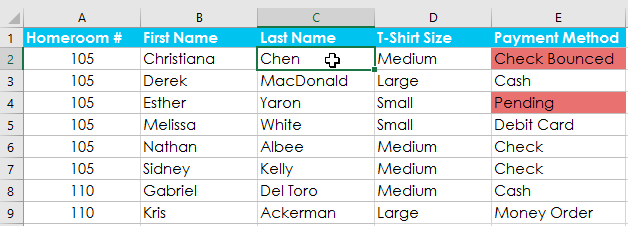
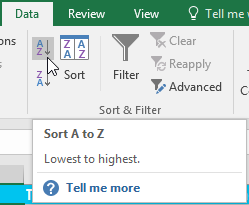
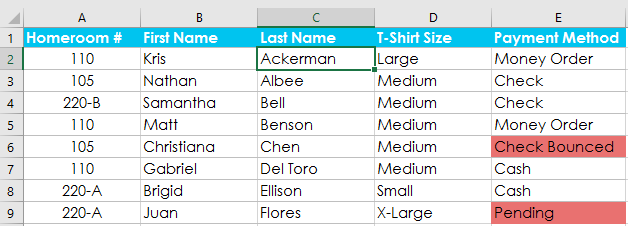

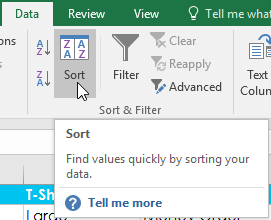



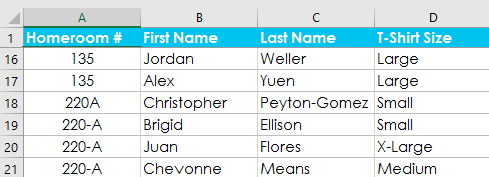
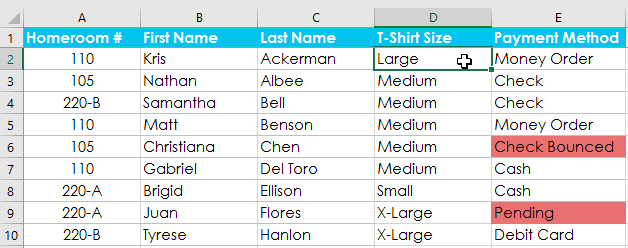

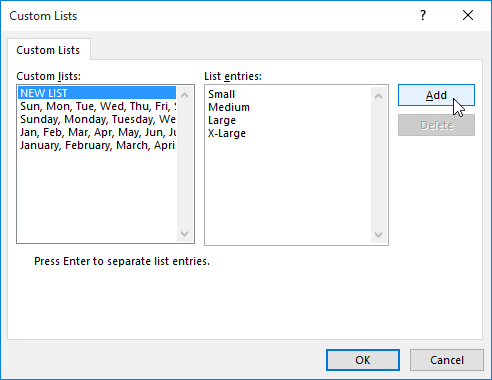



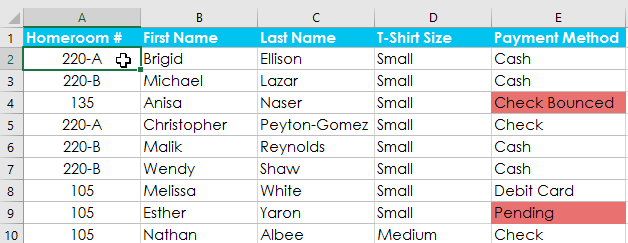

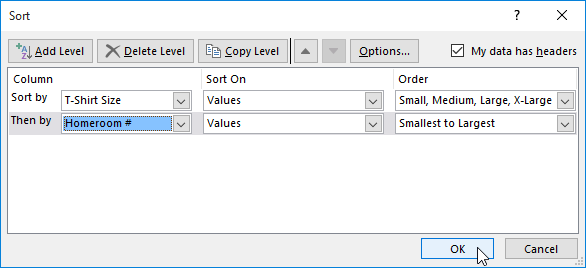


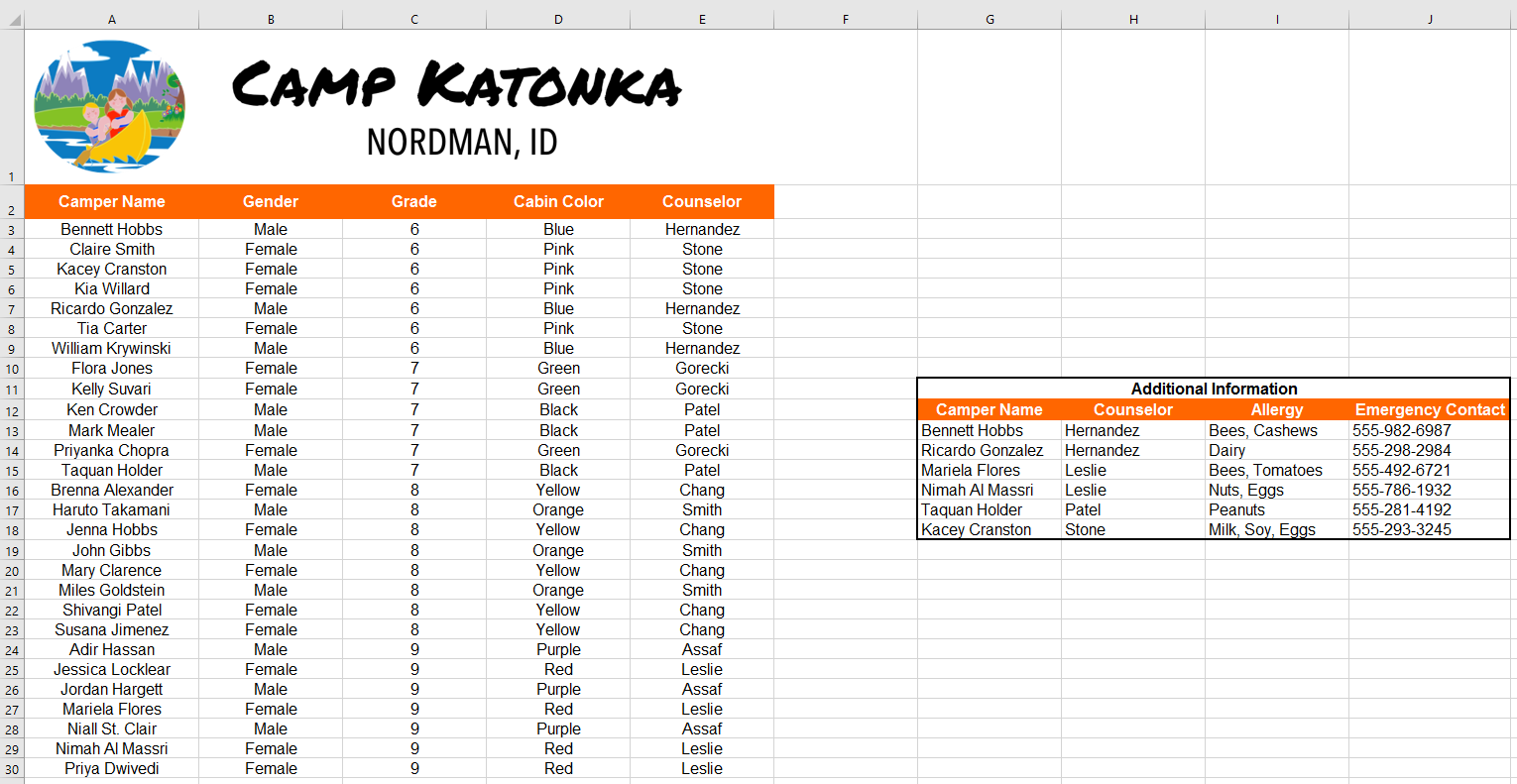


_07.jpg)
_05.jpg)
_06.jpg)
_09.jpg)
_02.jpg)
_03.jpg)
_04.jpg)
_10.jpg)









